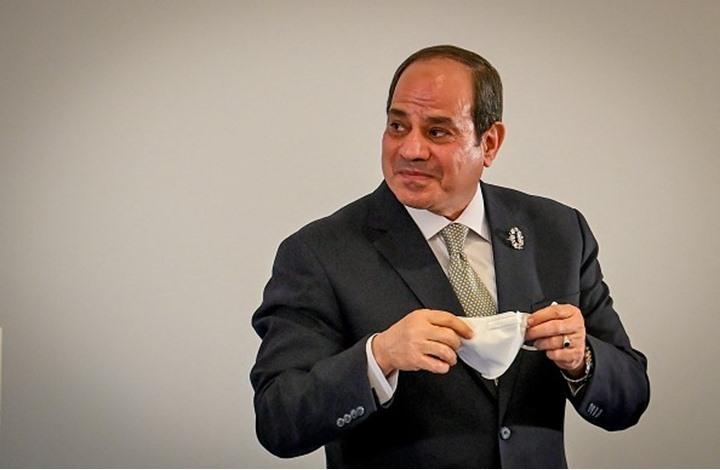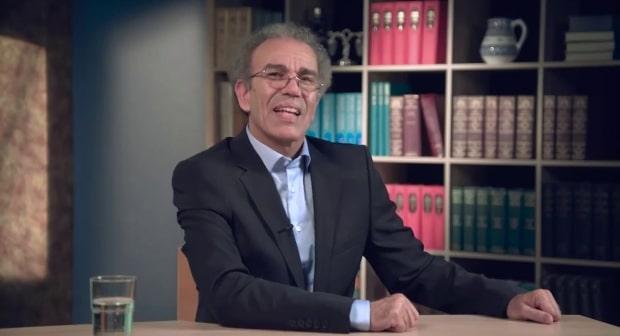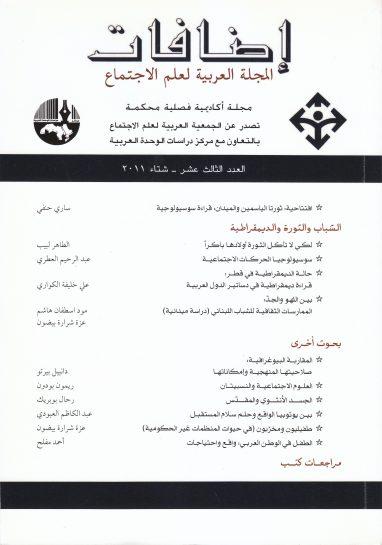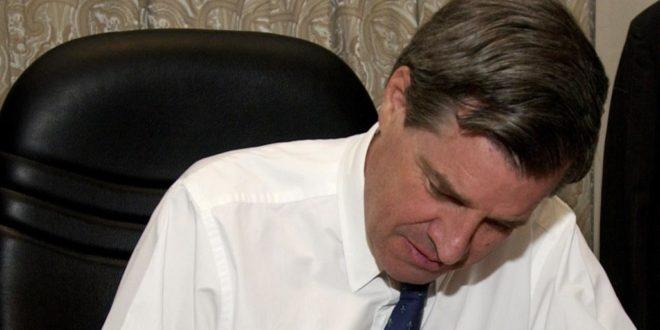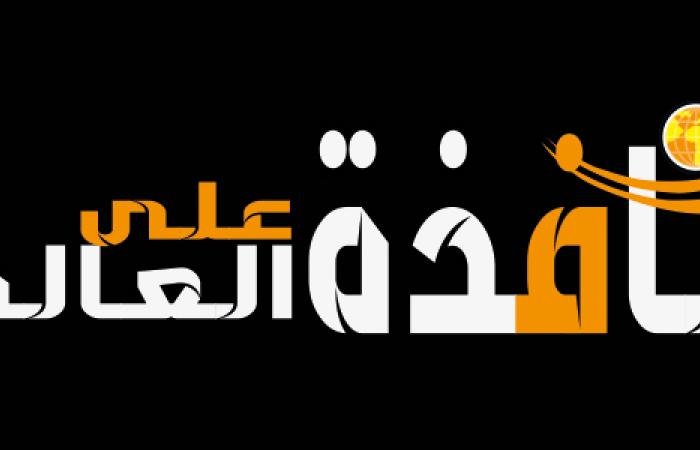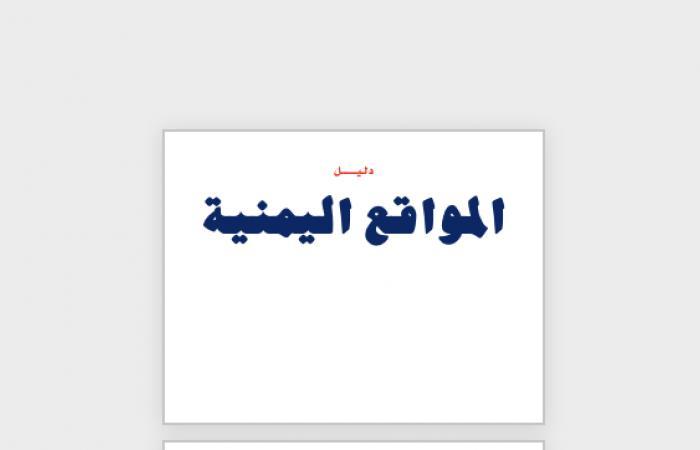Indicators of underdevelopment and cultural advancement in contemporary Arab and Islamic society: a comparative study of some developed countries - CAUS - Center for Arab Unity Studies
Summary:
This research aims to explain the status of contemporary Arab and Islamic society in terms of aspects of underdevelopment and civilizational advancement by using internationally approved indicators that include economic, social, political, technical, technical indicators, and comparing them to some developed countries as a criterion for knowing the current situation.
Models were chosen from Arab and Islamic countries to study their conditions and explain their cases.These countries are Saudi Arabia, Egypt, Morocco, Iraq, Libya, Turkey, Malaysia, and Iran, and were compared to some industrialized countries affiliated with developed countries such as China, Japan, France, Germany, and Italy, for the period from 2010 to 2018.To display the indicators data, descriptive analysis tools such as tables and graphics were used to facilitate and compare the conditions of these countries, and to know the extent of progress or retreat in each indicator of indicators.
The research concluded that the current situation of the Arab and Islamic countries is in a state of decline and weakness in most indicators, although these countries possess the factors of movement and the advancement- with the exception of the countries of Turkey and Malaysia, which made remarkable progress in some indicators, because they adopt more effective policies in achieving self-sufficiencyIn most areas.
The most prominent of the research is the necessity of coordination and integration between the Arab and Islamic countries, the unification of political decision, the establishment of joint economic markets to achieve economic development and self -sufficiency, the trend towards unity and the protection of Arab -Islamic national security.
Keywords: indicators of civilizational advancement, cultural advancement, cultural backwardness.
an introduction:
The interest in studying the issues of underdevelopment and civilization in the Arab and Islamic society has emerged since the end of the nineteenth century, and these issues have become a great interest in a group of Arab and contemporary Muslim thinkers, who have presented many studies, research and proposals that revolve around finding proposals and solutions to address retreat, stagnation and crisis with dimensionsThe different civilization that the Arab and Islamic society goes through.
Using a descriptive- analytical- comparative critical approach, this research tries to stand on a period of material factors and components of the progress and cultural advancement in the contemporary Arab and Islamic society compared to some of the developed countries of the world in the present era- the era of the major countries from the West and the East on the throne of contemporary global civilization;At the same time, considering these material components themselves may represent obstacles to the advancement and a reason for contemporary cultural backwardness, according to standards and indicators that contemporary scientific research relied on to assess the state of progress and backwardness in contemporary societies.
The research here has been limited to limiting the indicators of progress and backwardness in the Arab and Islamic society and displaying them compared to some developed countries as a standard to know our current situation, leaving other moral indicators of subsequent studies.
First: the search problem
Due to the bitter reality that the Arab and Islamic society is going through, retreat, backwardness and stagnation that included all levels, the views of Arab thinkers and intellectuals are multiple of contemporary interested in studying the issues of backwardness and progress on the mechanisms and factors of civilization advancement.Research tries to stand on a period of material factors and ingredients for progress and civilizational advancement in accordance with international standards and indicators in measuring progress and backwardness;Being dependent on specific levels and numbers.The search problem lies in answering the following questions:
1- What are the material factors for progress and civilization and their indicators?
2- What is the reality of the Arab and Islamic society in terms of material factors for progress and civilizational advancement according to global indicators compared to some developed countries?
Second: The importance of research
The importance of research is highlighted by the following:
1- It is discussed one of the most important issues that occupied contemporary human thought, which is the delay of Arab and Islamic societies and the progress of others.
2- The need to study the reality of Arab and Islamic society according to internationally approved indicators to show cases of underdevelopment and advancement and compare them to some developed countries to know the gap between the two parties in some material aspects.
3- The need of contemporary Arab and Islamic society to diagnose its civilizational reality, know the causes of backwardness, and explain its impact, as well as identify the factors of civilization and its components.
Third: Research objectives
The research aims to achieve the following goals:
1- Presenting indicators of measuring cases of progress and underdevelopment in Arab and Islamic society compared to some developed countries as a standard to know our current situation.
2- Study the case of some contemporary Arab and Islamic countries in terms of progress and backwardness during the period from 2010 to 2018, and compare it to some industrialized countries classified as one of the developed countries.
3- A statement of the most prominent reasons for the decline in contemporary Arab and Islamic countries and their weakness in most indicators, despite their possession of the possibility of promoting and the availability of its material factors..
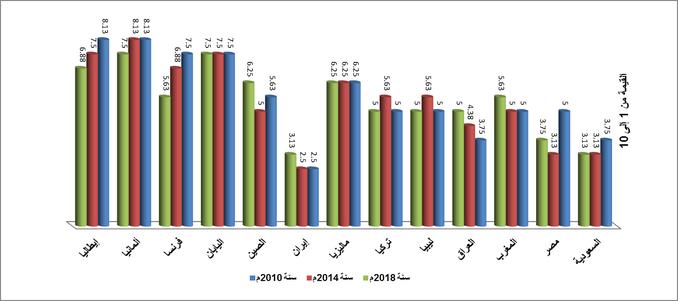
4- Submit some proposals.
Fourth: Research limits
Objective limits: Explaining cases of underdevelopment and civilization use using global approved indicators that include material indicators (economic, social, political, and technical).Moral indicators (intellectual, value and religious) were excluded.
Spatial and temporal boundaries: Some Arab and Islamic countries have been chosen as a model for research and study, and these countries were in Saudi Arabia, Egypt, Morocco, Iraq, Libya, Turkey, Malaysia, Iran, and compared them to some advanced industrial countries such as China, Japan, France, Germany, Italy.And that during the period between 2010 to 2018.
Fifth: Search terms
1- The retardation:
A- Failure to:
It says in the dictionary of the standards of language and the tongue of the Arabs: “The successor is against Qadam, and his successor succeeded him behind him, and he left him and succeeded him, making him behind him, and she sat behind so -and -so after him, and backwardness: delay.And the successor comes in the sense of backwardness who is offered. ”[1].
B- Failure as a term:
In the glossary of social sciences, the retardation is: “The high death rate, a decrease in the average age of the individual, the malnutrition and the high illiteracy rate, the exception of agricultural workers by a large percentage of the number of industry workers, the low operating rateEconomic in society, and submission to an arbitrary automatic ruling system. [2].
Some tend to define the backwardness from the economic side as "a term that is described by many countries whose development reveals over time for recession, or economic deterioration, from its manifestations: the scarcity of capital, the lower the relative importance of the industrial sector, the small per capita income on average;This is reflected in its effects on the low standard of living. [3].
We define the backwardness as “delay and retreat in the various fields and aspects of life (scientific, social, economic, political and technical), and it has prominent effects that appear in society, including: ignorance, poverty, unemployment, the spread of corruption, the deterioration of the economic conditions of society, the neglect of human resources capabilities and their disruption.”.
Based on the above, the problem of backwardness is the problem of civilization.This is what the thinker Malik bin Nabi referred to by saying: “The many problems that are called the term backwardness, are in fact different expressions of one and single problem facing every backward countries, that is, it is a problem of civilization” [4].Any society presents the perception of Malik bin Nabi linked to the understanding of the factors that build or destroy civilization [5].
2- Rose:
A- The rise for:
In the medieval dictionary, it is stated that “the meaning of the junction for the sake of social progress or others, and it is said: He got up from his place to such, and he got up to the enemy: faster to his meeting, and the abortion: the diligent that the path of progress and a lot of rise” [6].
B- Revolution as a term:
The promotion is "a work and collective thought, so no person, no matter how much, can do a renaissance alone, but rather the renaissance thought and all great ideas are ideas that transmit and mature from generation to generation, so that you can make the desired change" [7].
And to advance two meanings, one of which is: “The nation is renewed in its total conditions with a factor or factors that provoked it and overcame other factors.” As for the other meaning, it is “attention to the necessity of bringing about change and feeling the beginning of that change” [8].
And the civilizational advancement means "the fruit of the interaction of the people of the nation with their reality, and their endeavor to develop this reality, in order to achieve goals that they have elaborated, and set its achievement in their eyes, and this crystal is done through the march of jihad and struggle, and struggle, and witnesses a dialogue related to society between its various intellectual currents and social slides, and it relates toThese goals are with the lives of people, and their dreams in light of what they live, suffer, and hope for them. [9].
Jassim Sultan believes that “the civilizational advancement is a general intellectual movement spread in most countries of the Arab and Islamic world that is constantly progressing in the space of the century and putting the new without breaking with heritage, and it works in all religious, social, economic and political fields” [10].
Based on the foregoing, the civilization can be defined as: “Standing on the causes of backwardness and finding appropriate solutions to it, and working to build a comprehensive project that starts from a unified vision and common goals to achieve sustainable development and self -sufficiency in all fields, and the trend towards rapprochement and dialogue between the various intellectual currents in societyAnd the pursuit of keeping pace with the times, its requirements and requirements and the progress and development it has reached without breaking with heritage..
3- Arab and Islamic society:
It is a "complex harmony that includes its basic components, individuals, groups and the homeland ... the environment, population, social organization, institutions, economic, social, political and cultural structures in its various branches and directions, interacting with each other and with other societies throughout history" [11].
Sixth: Entrance
There are many indicators of underdevelopment and civilization and their standards that researchers and specialists in the economic, social, political and technical fields have relied on, due to their different perceptions of backwardness and advancement.Here we can offer the most important indicators internationally approved by the United Nations and other internationally recognized organizations, and include economic, social, political, and technical indicators, with the statement of standards that are emanating from these indicators and comparing them to some developed countries as a standard to know the current situation of Arab and Islamic society.
The justifications for choosing the studied and comparison countries:
Some Arab and Islamic countries and some advanced industrial countries were chosen;Because it possesses some of the attributes and characteristics common to the ingredients (whether in its natural resources or its geographical or historical location and so on) and we can summarize those justifications for the following:
Seventh: The first topic: The economic indicators of the countries of research and comparison
First: GDP [12]
Table (1-1) shows the domestic product index in the group of Arab and Islamic countries and industrial countries for the period (2010-2018).
From the table (1-1) and the graphic drawing in it, we notice the decrease in the local product in most Arab and Islamic countries, with the exception of the state of Turkey;Where we find a noticeable increase in its local product during the period (2010 - 2018 AD), while it was noted a significant increase in the GDP of the Group of Industrial Countries..Here, the extent of the gap between it and the Arab and Islamic countries appears.
Second: The per capita income index annually [13]
جدول (2-1) يُبيّن مؤشر دخل الفرد في مجموعة الدول العربية والإسلامية والدول الصناعية للفترة (2010-2018م).
From the table (2-1) and the graphic drawing in it, we notice the decrease in the annual per capita income in the Arab and Islamic countries with the exception of Turkey and Saudi Arabia, while in the group of industrialized countries it was noted a significant increase in the annual individual income, except for China, because its population exceeds one billion and a third of one billion people, i.e. what is equivalent to the entire world..
Third: Exports of Export volume [14]
Table (3-1) shows the export index in the group of Arab and Islamic countries and industrial countries for the period (2010-2018).
From the table (3-1) and the graphic drawing in it, we note the decline in the volume of exports in the Arab and Islamic countries, with the exception of Turkey, which witnessed an increase in the size of its exports from what they were in previous years, and it is worth noting that the severe decrease in the volume of exports to the state of Iran is due to the economic sanctions that have been doneIt was imposed by America on its oil exports.While a decline in the volume of exports to the group of industrialized countries was also observed from what they were in previous years, but it is still in the forefront of the list of Arab and Islamic countries in the subject of research.
Fourth: Import size index [15]
Table (4-1) indicates the import index in the group of Arab and Islamic countries and industrial countries for the period (2010-2018).
From Table (4-1) and the graphic drawing in it, we notice a noticeable decrease in the volume of imports for the State of Turkey, which recently relied on itself in the field of manufacturing and achieving self-sufficiency in most areas.While a decrease in the volume of imports for the group of industrialized countries was observed from what they were in previous years, this indicates that these countries depend on their economic policies to achieve self -sufficiency in most fields except for some imports such as oil and gas.

